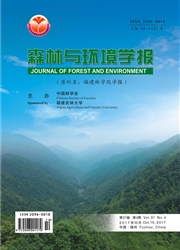

 中文摘要:
中文摘要:
对福建省建瓯市山地红壤的园地(茶园、桔园)、林地(杉木、木荷、封育)不同土层(0—10cm、10—20cm)土壤活性有机碳(轻组有机碳、可溶性有机碳、微生物量碳)含量进行研究。结果表明,林地转变园地后,在0—10cm土层土壤轻组有机碳(LFC)、可溶性有机碳(DOC)和微生物量碳(MBC)含量平均分别下降了65.97%、64.60%和54.78%,在10-20cm则平均分别下降了57.39%、21.88%和43.71%;土壤微生物商在不同利用方式下没有明显分异规律。土壤活性有机碳含量随土层加深而递减(桔园除外),但不一定有显著差异。因此,亚热带山地红壤内林地转变为园地会导致土壤活性有机碳含量大幅度下降,活性有机碳比土壤总有机碳对土地利用变化更为敏感。
 英文摘要:
英文摘要:
The contents of soil active organic carbon (light fraction organic carbon, dissolved organic carbon, and microbial biomass carbon) of surface soil samples (0- 10 cm, 10 -20 cm) were investigated at five different land use sites in Jian'ou City, Fujian Province, China. The results showed that the contents of soil light fraction organic carbon, dissolved organic carbon and microbial biomass carbon in 0 - 10 cm declined respectively by 65.97%, 64.60% and 54.78% while woodland conversed into orchard land, and those in 10 -20 cm decreased by 57.39% , 21.88% and 43.71% , respectively. The microbial quotient had minimal impact on different land use. The contents of soil active organic carbon decreased with increasing of soil depth, except the Citrus aurantium orchard soil. It was concluded that the conversion of woodland into orchard land led to a loss of soil active organic carbon, and active organic carbon was sensitive to the change of land use.
 同期刊论文项目
同期刊论文项目
 同项目期刊论文
同项目期刊论文
 期刊信息
期刊信息
